京都には和食だけでなく中華にも独自の伝統と歴史があるのですが、今回ご紹介するお店もその伝統を守って長年営業してきた一店。一般の観光客にはまず見つからない、住宅街のなかでひっそりと営業する、京風中華料理の隠れた名店です…
北京料理 盛華亭|銀閣寺の近くで30年以上営業する京都市左京区の老舗中華料理店
盛華亭は、祇園の名店「盛京亭」で腕を振るっていた先代が、1982年に左京区の銀閣寺そばにオープンした北京料理店。先代が「辣油を店に置かない」ことに強くこだわりを持っており、その結果試行錯誤で生まれた「ごま入り餃子」が名物になっています。
盛華亭にはフカヒレやカニを使った比較的高級な料理もあるのですが、大部分のメニューは一品1000円以下で食べられる大衆中華料理です。一皿のボリュームは少なめなので、ガッツリ食べたい人には物足りないかもしれませんが、1人で訪店して何種類もの料理をオーダーするような、大人の楽しみをじっくり味わいたい方には絶好のお店です。
海老ときくらげのあっさり酢のもの:くらげのコリコリ感がたまらない盛華亭おすすめメニュー
それでは料理のご紹介。まずは前菜としてオーダーした「海老ときくらげのあっさり酢のもの」900円…
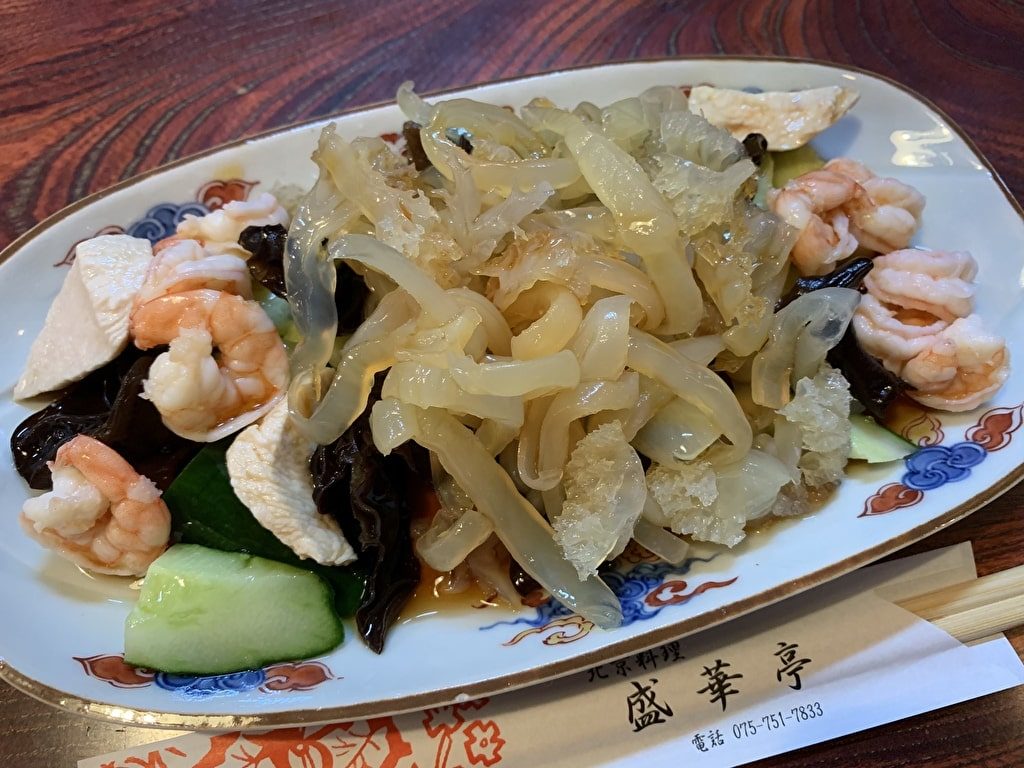
目の前に運ばれて、まずその量に驚きました。横長のお皿にてんこ盛りになったクラゲ。それを左右からはさみ込むように小エビやきくらげ、鶏むね肉、きゅうり…これは、1人で食べる前菜としては、明らかにボリュームオーバーです。
とはいえ、冷たくコリコリしたクラゲの食感がたまらず、箸はどんどんお皿へ伸びていきます。味付けは本当にさっぱりで、ほんのりと酢の酸味と砂糖の甘さを感じるくらい。非常にまろやかな味のタレになっています。
かしわの唐揚げ:むね肉とモモ肉の2つの味が同時に楽しめる中華料理の定番メニュー
続いてできあがったのが「かしわの唐揚げ」600円…
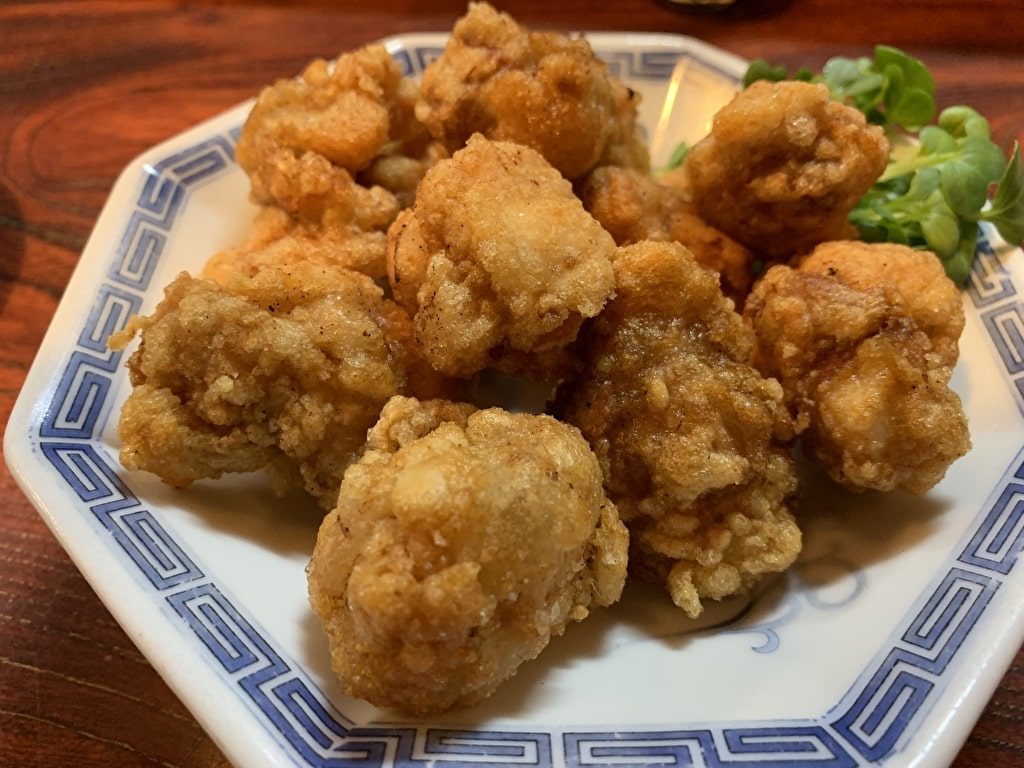
「かしわ」とは鶏のこと…つまり、鶏の唐揚げです。うずらの卵大の唐揚げが合計10個くらいあるでしょうか。コロッとしたひと口サイズなので、女性でも食べやすいと思います。サクッとした衣の中は、淡白なむね肉とジューシーなもも肉の2種類のバリエーションがあり、最後まで飽きが来ません。下味は控えめなので、テーブル備え付けの塩をつけてお召し上がりください。
ごま入り餃子の食べ比べ:水餃子、焼き餃子ともに、皮に練り込まれた炒りごまが香ばしい
ここで盛華亭の名物である「ごま入り餃子」2種類をご紹介。まずは先に出てきた水餃子 6個入り550円から…
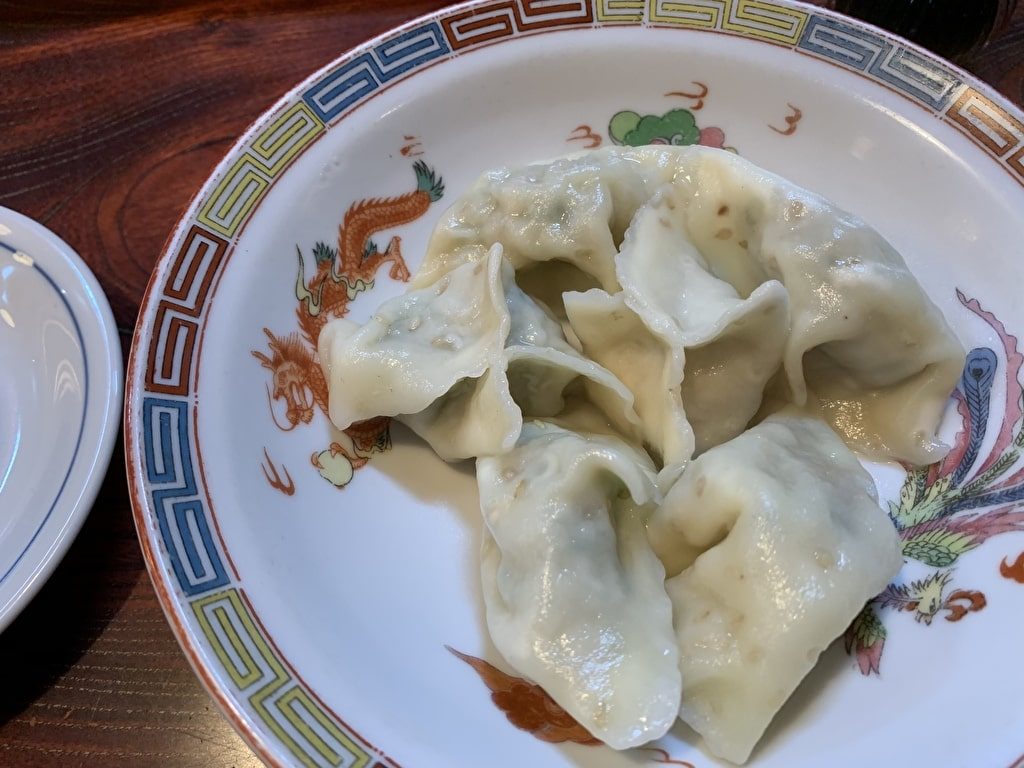
水餃子の皮に白ごまが練りこまれているのが、画像でも伝わるかと思います。餃子を口に入れると、もっちり茹で上がった皮の中から突然プチっと弾けて、ごまの風味がふわ〜っと広がっていくんです。
餃子の餡はにんにくなど香りの強い食材を排除したもので、京都ならではの中華路線を走っています。ごまのアクセントはあるものの、全体的にはさっぱりした味付けです。ちょっと物足りない感じなら、一緒に出される特製酢醤油をかけてお召し上がりください(これがまたまろやかで上品な味なんです)。
そしてもう一皿の焼き餃子 8個入り650円…
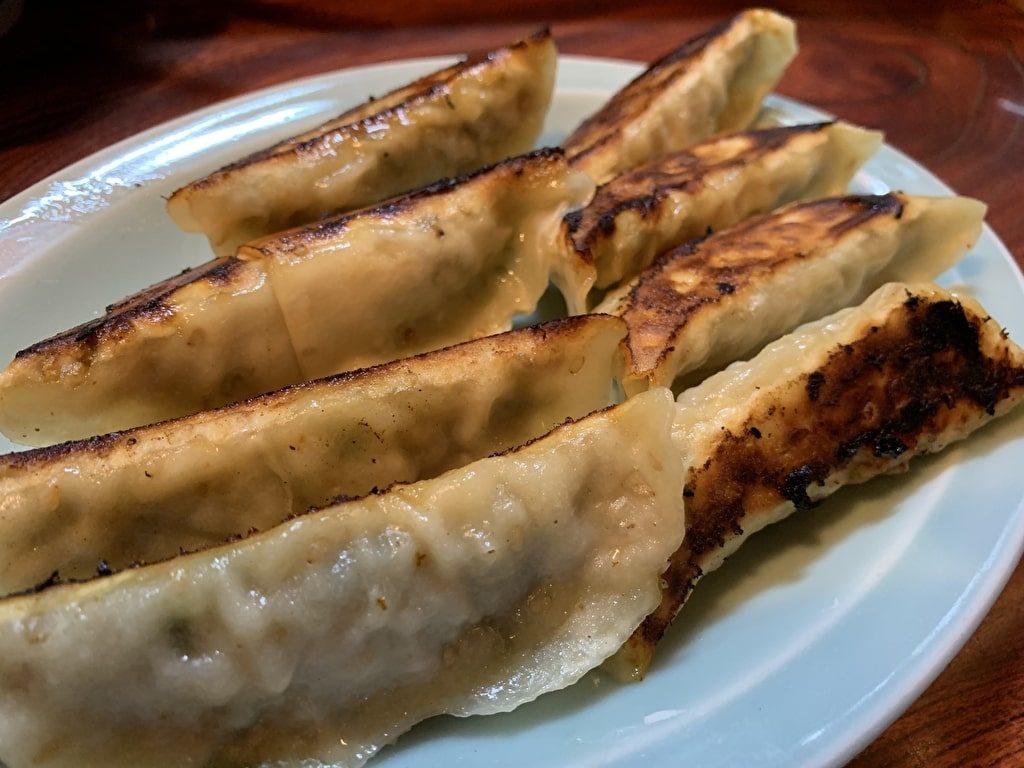
具材は水餃子とまったく一緒ですが、皮は薄く伸ばしてあり中の餡が微妙に透けて見えます。焼き目をつけている分ごまの香ばしさが増強されていて、にんにく除去の物足りなさをまったく感じさせないインパクトのある餃子です。
そして、おかみさんが「お好みで…」と出してくれた辣油。先代の時代は店に置かない方針だったラー油ですが、2代目ではお客さんの要望に応えて店に置くようになったようです。僕は使いませんでしたが、香ばしいごまの風味とラー油はすごくハマる組み合わせのように思います。
五目焼き飯:パラパラご飯にシャキッとしたタケノコのアクセントが絶妙
最後に締めでオーダーした五目焼き飯 550円…
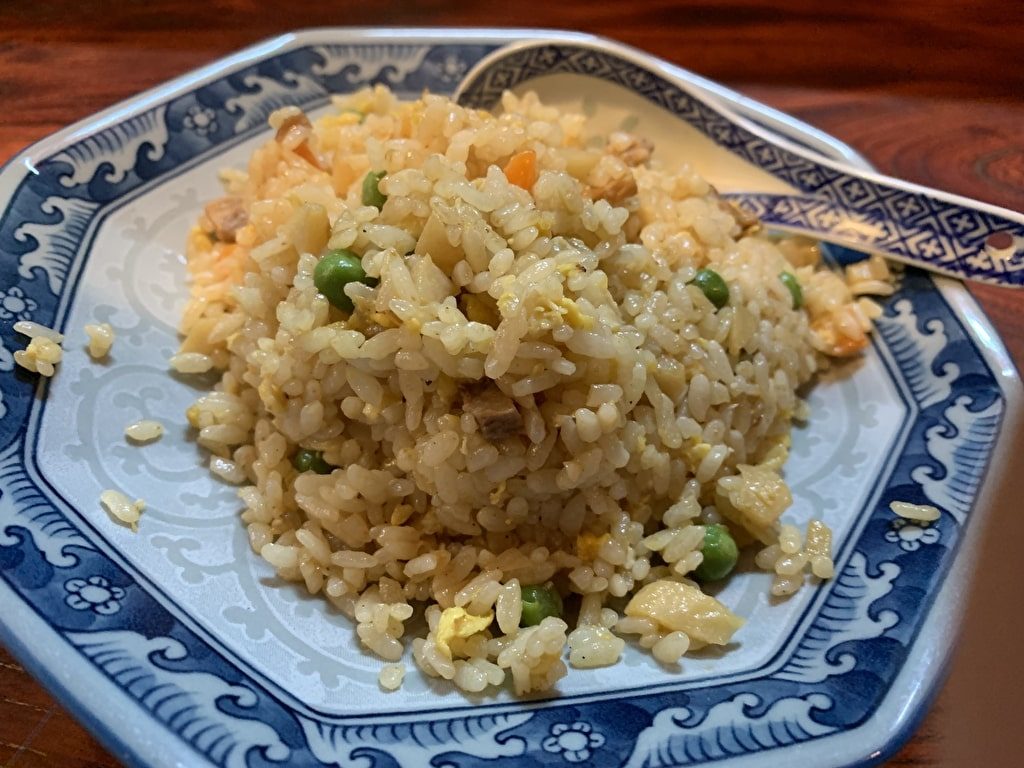
関西なので、「チャーハン」ではなく「焼き飯」ですね。具材は卵のほかにグリーンピース、チャーシュー、タケノコ、人参の5種類。
全体的に味付けがあっさりの盛華亭ですが、この焼き飯も非常にあっさりとしています。ご飯はパラっと一粒一粒がきちんと分離していて、油っこさを全く感じさせません。炒め物ではなく炊き込みご飯に近い印象すら受けます。
そのパラパラご飯の中に散らばったタケノコが食感のアクセントになっていて、柔らかいご飯の中に埋もれたタケノコに歯が当たると、シャキッとした歯ごたえが新鮮な刺激となって、ご飯の食感に慣れつつあった怠惰な脳を活性化します。京都中華ハマムラの春巻きもそうでしたが、薄味の京風中華におけるタケノコの使い方には特筆すべきものがある気がします。
駐車場がないので車での来店はご注意を。北京料理 盛華亭へは、阪急京都線の河原町駅から京都市営バス17番(銀閣寺・錦林車庫行き)で浄土寺バス停下車
それでは、お店の詳細です。
盛華亭 (中華料理 / 元田中駅、茶山・京都芸術大学駅、蹴上駅)
夜総合点★★★★☆ 4.0
住所:〒606-8412 京都府京都市左京区浄土寺馬場町39−4
電話番号:075-751-7833(➿0120–054-037)
営業時間:17:00-22:30 LO
定休日:毎週月曜、第3火曜日
車で来られる方へ…お店に駐車場はありませんが、周辺にコインパーキングがいくつかあります。お店のWebサイトでも紹介されていますので、そちらもご参照ください。
P.S. 京都で美味しい中華料理をお探しのあなた、ぜひこちらの記事にも立ち寄ってみてください…

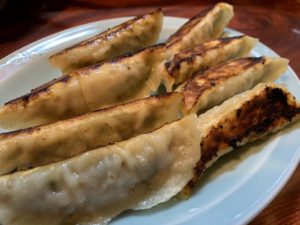
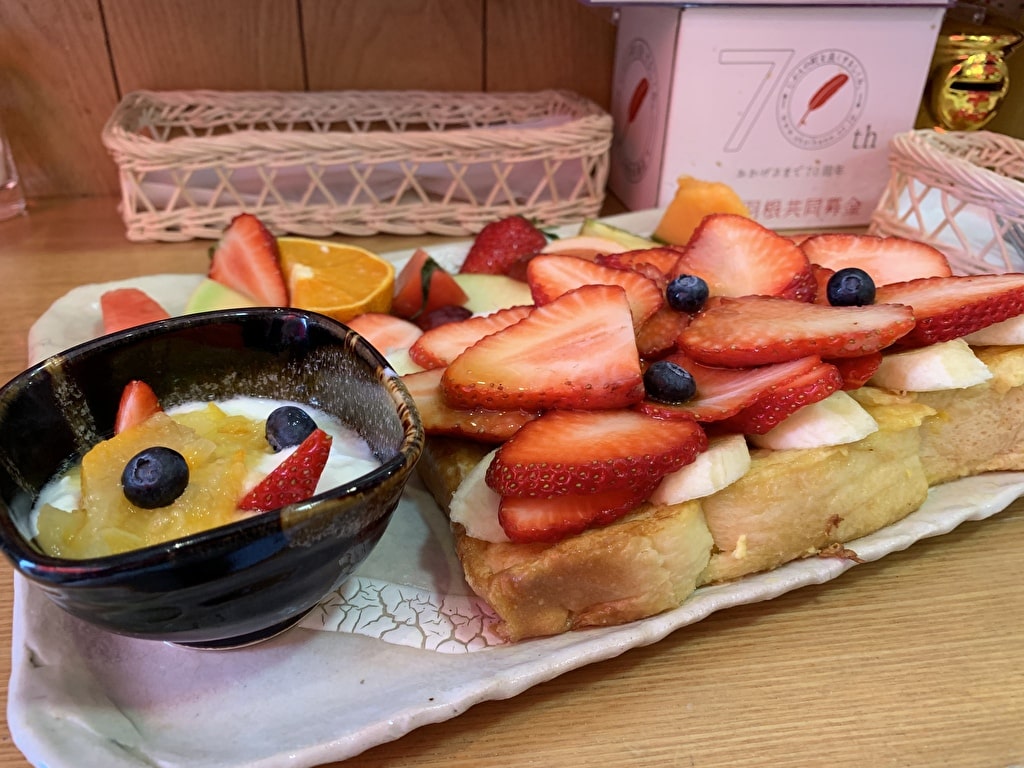 トップフルーツ八百文|取り揃えたフルーツの種類は全国屈指の有名店
トップフルーツ八百文|取り揃えたフルーツの種類は全国屈指の有名店
コメントを残す